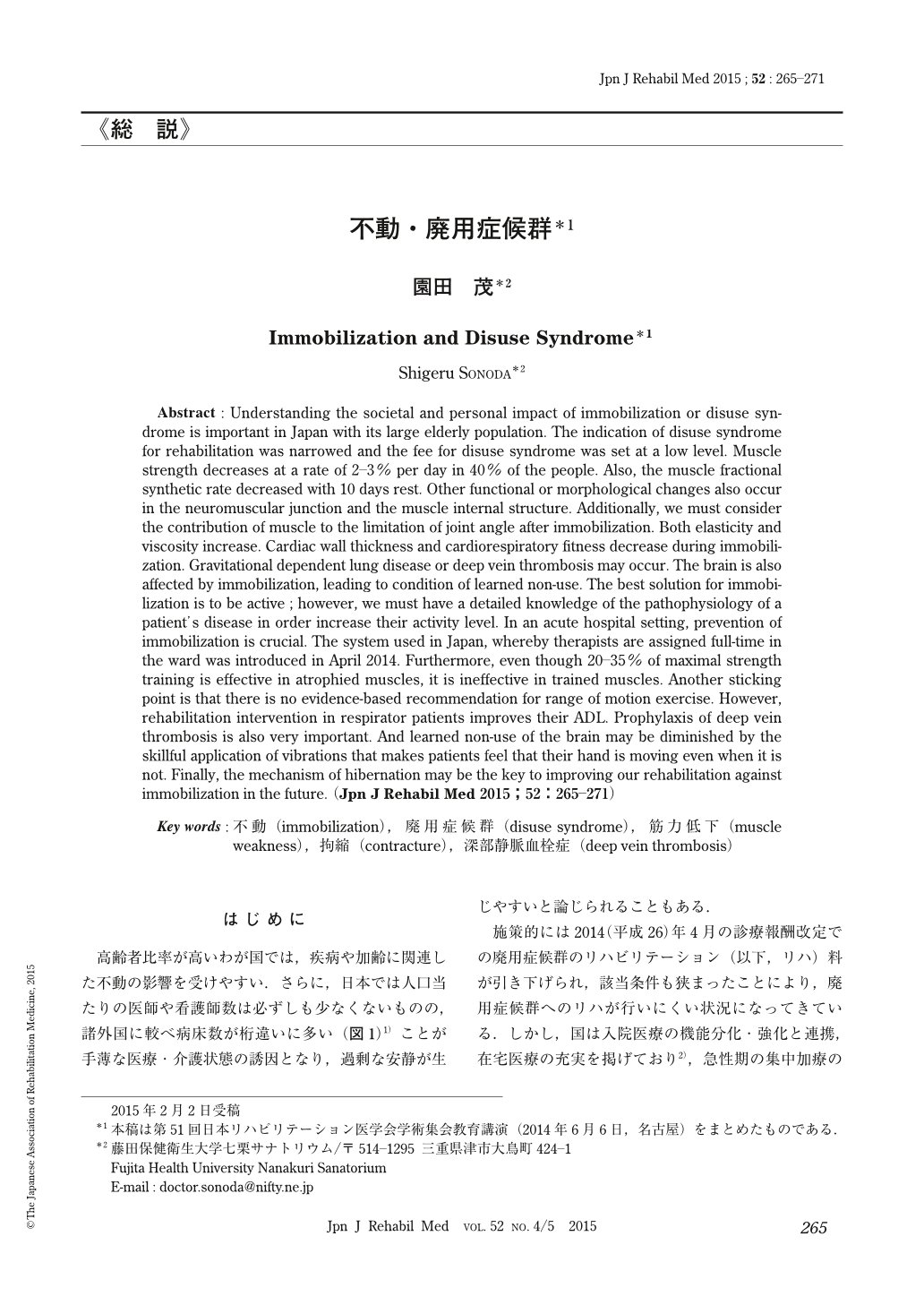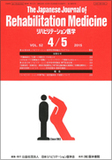Japanese
English
- 販売していません
- Abstract 文献概要
- 1ページ目 Look Inside
- 参考文献 Reference
はじめに
高齢者比率が高いわが国では,疾病や加齢に関連した不動の影響を受けやすい.さらに,日本では人口当たりの医師や看護師数は必ずしも少なくないものの,諸外国に較べ病床数が桁違いに多い(図1)1)ことが手薄な医療・介護状態の誘因となり,過剰な安静が生じやすいと論じられることもある.
施策的には2014(平成26)年4月の診療報酬改定での廃用症候群のリハビリテーション(以下,リハ)料が引き下げられ,該当条件も狭まったことにより,廃用症候群へのリハが行いにくい状況になってきている.しかし,国は入院医療の機能分化・強化と連携,在宅医療の充実を掲げており2),急性期の集中加療の間や在宅生活中の不動・廃用を防ぐ,または起こってしまった場合には改善を図ることがリハ関係者の使命であろう.今,改めて不動・廃用症候群を再考したい.網羅的または系統的な既存論文の概観は困難であり,結果的にシステマティックレビューとはなっていないことを予め申し述べる.
Abstract : Understanding the societal and personal impact of immobilization or disuse syndrome is important in Japan with its large elderly population. The indication of disuse syndrome for rehabilitation was narrowed and the fee for disuse syndrome was set at a low level. Muscle strength decreases at a rate of 2-3% per day in 40% of the people. Also, the muscle fractional synthetic rate decreased with 10 days rest. Other functional or morphological changes also occur in the neuromuscular junction and the muscle internal structure. Additionally, we must consider the contribution of muscle to the limitation of joint angle after immobilization. Both elasticity and viscosity increase. Cardiac wall thickness and cardiorespiratory fitness decrease during immobilization. Gravitational dependent lung disease or deep vein thrombosis may occur. The brain is also affected by immobilization, leading to condition of learned non-use. The best solution for immobilization is to be active ; however, we must have a detailed knowledge of the pathophysiology of a patient's disease in order increase their activity level. In an acute hospital setting, prevention of immobilization is crucial. The system used in Japan, whereby therapists are assigned full-time in the ward was introduced in April 2014. Furthermore, even though 20-35% of maximal strength training is effective in atrophied muscles, it is ineffective in trained muscles. Another sticking point is that there is no evidence-based recommendation for range of motion exercise. However, rehabilitation intervention in respirator patients improves their ADL. Prophylaxis of deep vein thrombosis is also very important. And learned non-use of the brain may be diminished by the skillful application of vibrations that makes patients feel that their hand is moving even when it is not. Finally, the mechanism of hibernation may be the key to improving our rehabilitation against immobilization in the future.

Copyright © 2015, The Japanese Association of Rehabilitation Medicine. All rights reserved.


